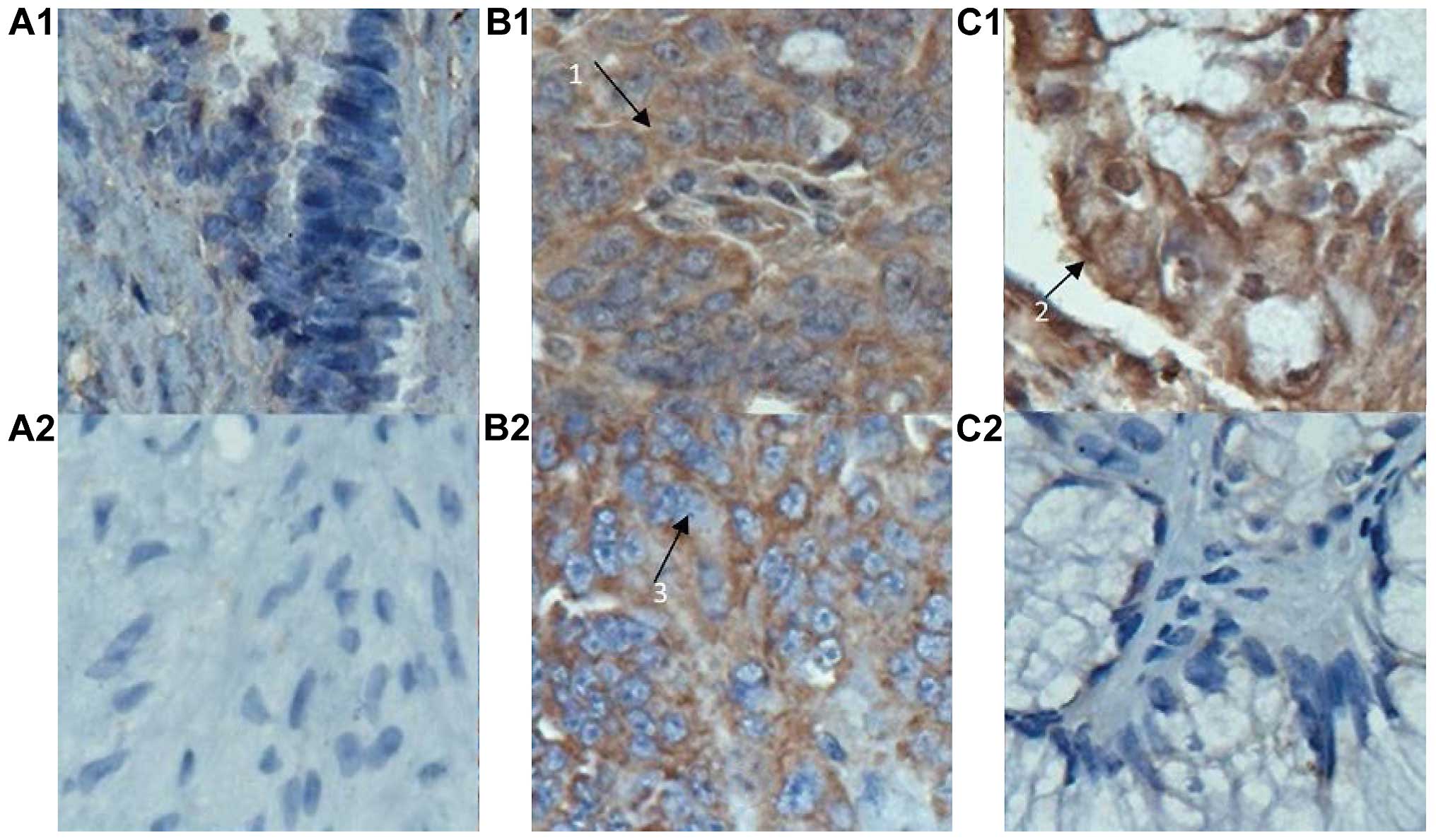Clinical relevance of expression of B7-H1 and B7-H4 in ovarian cancer
- Authors:
- Published online on: March 2, 2016 https://doi.org/10.3892/ol.2016.4301
- Pages: 2815-2819
-
Copyright: © Xu et al. This is an open access article distributed under the terms of Creative Commons Attribution License.
Metrics:
Total
Views: 0 (Spandidos Publications: | PMC Statistics:
)
Total PDF Downloads: 0 (Spandidos Publications: | PMC Statistics:
)
Abstract
The aim of the present study was to investigate the expression of B7-H1 and B7-H4 in ovarian neoplasm tissues and to examine their clinical relevance. A total of 112 ovarian biopsies were collected from patients with epithelial ovarian cancer (EOC) and 10 were taken from ovarian benign neoplasms. The samples were processed in paraffin tissue chips, and subjected to immunohistochemical staining and analysis. Associations of B7‑H1 and B7‑H4 expression with patients' clinical parameters, such as histological typing, cell grading, International Federation of Gynecology and Obstetrics staging, tumor size, and metastatic status, were examined by statistical analysis. Survival curves were constructed using the Kaplan‑Meier method and the log‑rank test. Independent prognostic factors were evaluated using the Cox regression model. The results showed an extremely low or negative expression of B7‑H1 and B7‑H4 in the 10 benign ovarian neoplasm tissues (control): By contrast, a positive expression of B7‑H1 and B7‑H4 was observed in 55.4% (62/112) and 37.5% (42/112) of the EOC tissues, respectively. The differences between the two groups were significant. In addition, the co‑expression of B7‑H1 and B7‑H4 was found in 31.3% (35/112) of the EOC cases. Furthermore, the progression‑free survival and overall survival were significantly lower in EOC patients with a high expression of B7‑H1 and B7‑H4 (χ2=45.60 and 37.99, respectively). These results demonstrated that the expression of B7‑H1 and B7‑H4 in EOC tissues was significantly associated with poor prognosis and high relapse rate of EOC. The findings suggest that B7‑H1 and B7‑H4 is a negative prognostic marker for EOC and a potential immunotherapeutic target for patients with EOC.














